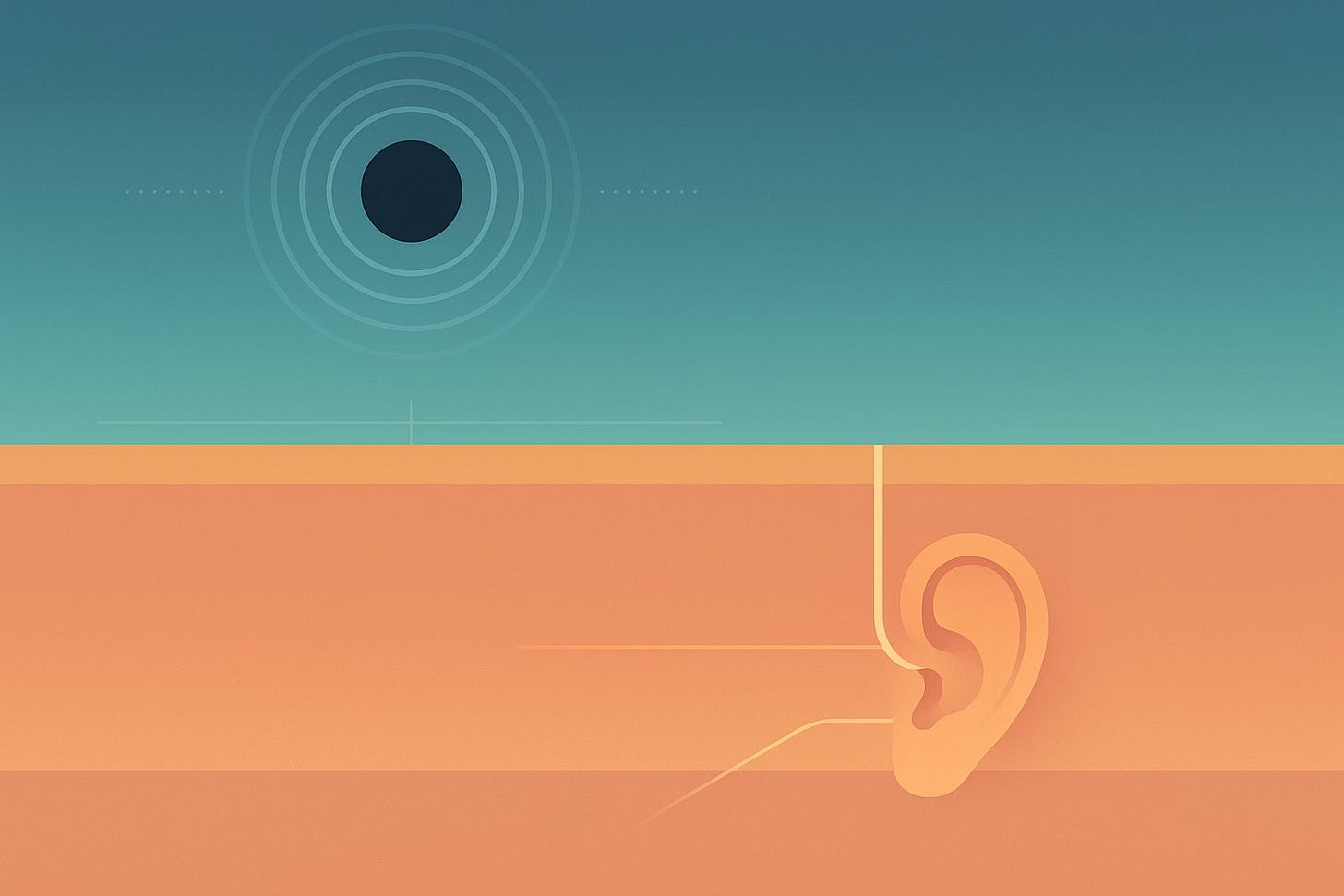Quantum Spielerei 13: Black-Hole Drums, Gravitational Waves, and the Underground Ear
Quantum Spielerei:
Black-Hole Drums, Gravitational Waves, and the Underground Ear
Imagine spacetime as a giant trampoline. Two black holes tango, trip, and—whump—slam the fabric. Ripples race outward. Those ripples are gravitational waves: tiny stretches and squeezes that pass through you, your coffee, and your calendar, mostly unnoticed, like the universe whispering “pssst… something huge just happened.”
Black holes: the loudest quiet things
Black holes don’t shine, but when they collide they ring—literally. The newborn hole vibrates like a struck bell (the “ringdown”). From that note we read off its mass and spin, and test whether Einstein’s math still holds when gravity is turned to 11.
How we “hear” the whisper
We use laser yardsticks called interferometers. Split a laser beam down two long tunnels, bounce each off mirrors, recombine them: if a gravitational wave passes, one tunnel gets a hair longer, the other a hair shorter, and the recombined light flickers. That flicker is a cosmic drumbeat.
Enter the
Einstein Telescope
(ET): the underground ear
Now take that idea and build it underground (quieter, less tremor drama), in a triangle with very long arms (to catch deeper notes). Each side hosts two interferometers—one tuned to bass (ultra-low frequencies), one to treble (higher). Together they turn spacetime’s whisper into a high-fidelity soundtrack: earlier, farther, fainter events than we can hear today.
Why this actually matters (beyond “wow, cool physics”)
1) A new cosmic map (no light required).
Gravitational waves travel through dust, gas, and cosmic chaos without blinking. That lets us chart black-hole familiesacross the universe, learn how they form (stellar graveyards? primordial relics?), and watch the growth of structure over cosmic time.
2) Cosmic rulers for the universe’s expansion.
Mergers act as “standard sirens.” From the wave alone we get distance; pair it with any hint of where on the sky it came from, and we pin down how fast the universe expands—cross-checking and sharpening our messy cosmology debates.
3) Extreme-matter physics—no lab required.
When neutron stars collide, their squishy insides leave fingerprints in the wave. That tells us about matter at densities beyond any experiment—nuclear physics via astronomy.
4) Hard-mode tests of gravity.
Does the ringdown match a perfect black-hole bell, or do we hear extra overtones hinting at new physics? ET’s cleaner, deeper listening lets us try to break Einstein in the strongest fields. (So far he’s annoyingly robust.)
5) Technology spillovers you’ll actually feel.
Building ears this sensitive pushes:
Lasers & optics (brighter, cleaner, more stable—useful for communications and industry)
Vibration isolation & sensing (better inertial sensors, navigation, geodesy)
Cryogenics & materials (quieter mirrors, lower-loss coatings, precision manufacturing)
6) Multi-messenger weather reports for the universe.
Combine waves with light, radio, neutrinos—suddenly we can time the birth of heavy elements (gold, platinum), watch cosmic jets ignite, and stitch together cause-and-effect stories instead of guessing from snapshots.
Pocket summary
Gravitational waves = spacetime ripples from colossal collisions.
Black holes = silent actors that sing only when they smash or settle.
Einstein Telescope = an ultra-quiet, underground, tri-armed laser ear to hear more, earlier, and clearer.
Usefulness = sharper cosmology, new nuclear physics, tougher tests of gravity, and tech that leaks into everyday life.
The universe has been drumming for billions of years. We finally built microphones. Now we’re upgrading to a concert hall under our feet—so hush the seismic noise, dim the lights, and let spacetime play.


